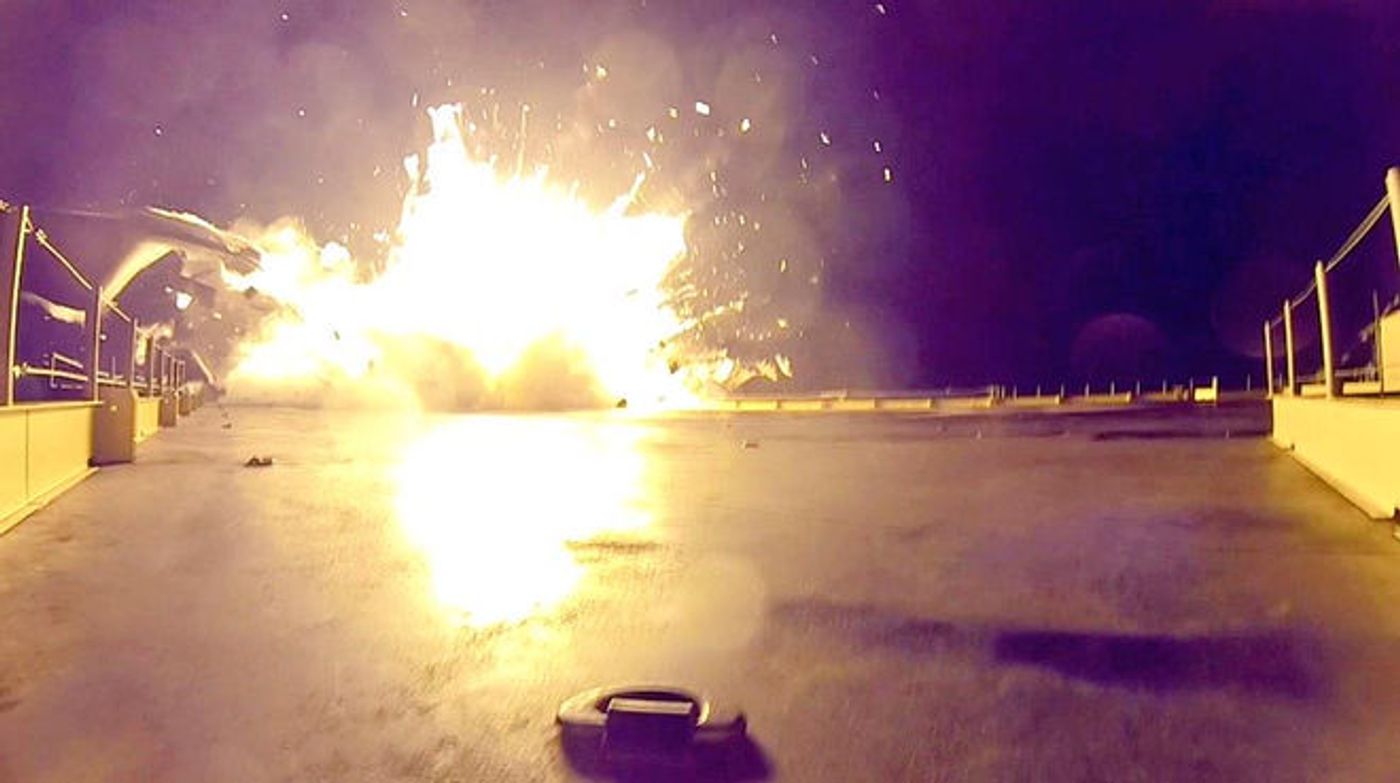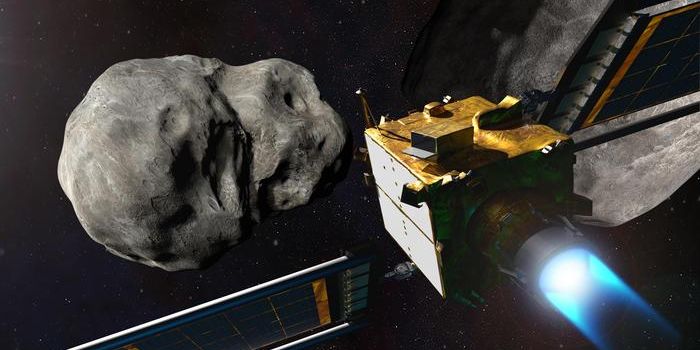Falcon 9 Rocket Crashes Hard on SpaceX's Drone Ship in Landing Attempt
SpaceX attempted to land a Falcon 9 rocket once again this morning after having launched two telecommunications satellites into orbit around the Earth at the same time and on the same rocket.
The launch of the satellites was successful, and SpaceX was very happy to share that the primary mission was successful.
As always, SpaceX attempted to land the reusable Falcon 9 rocket they used to send those satellites into space on the drone ship at sea. Unfortunately, things didn’t really go as planned, and it ended a successful landing streak for the American commercial space company.

SpaceX CEO Elon Musk took to Twitter this morning to report that the Falcon 9 rocket had apparently landed really hard on the drone ship, essentially crashing on its surface. It was reportedly the hardest impact to date of all of SpaceX’s landings.
The cause for the crash of the rocket on the drone ship was apparently due to a rapid unscheduled disassembly (RUD) of a booster rocket on the Falcon 9 rocket assembly itself.
Ascent phase & satellites look good, but booster rocket had a RUD on droneship
— Elon Musk (@elonmusk) June 15, 2016
Despite the event, Musk says that the drone ship didn't take any damage and can continue to be used. After all, that thing has to be built to be rocket-proof, even when they land hard and/or explode.
One of the three landing engines, as a result, didn’t have enough thrust to compensate for the landing. Musk explained on Twitter that High-G landings are very sensitive to booster rocket thrust, and that when one of the rockets isn’t operating at max capacity, landings won’t go as expected.
Sometime before the end of this year, SpaceX will be upgrading the booster rockets with fail-safes that should help prevent this from happening again in future landing attempts. The upgrades will involve allowing the other booster rockets to compensate for another’s failure, hopefully re-stabilizing the rocket in the event of a failed thrust.
Upgrades underway to enable rocket to compensate for a thrust shortfall on one of the three landing engines. Probably get there end of year.
— Elon Musk (@elonmusk) June 15, 2016
The video of the landing was shared by SpaceX CEO Elon Musk on Thursday. He notes that the landing didn't occur as quickly as previously thought, but that the landing was still harder than others.
Looks like early liquid oxygen depletion caused engine shutdown just above the deck pic.twitter.com/Sa6uCkpknY
— Elon Musk (@elonmusk) June 17, 2016
As it appears right now, reusable rocket technology has a lot of potential to revolutionize the space travel industry, but it’s still very much an emerging technology that doesn’t have a whole lot of reliability at this point in time.
Whenever reusable rocket technology does become more reliable, it’ll make space missions several times less expensive to carry out, as paying $250,000 to re-fuel the same rocket over and over is going to be far more cost efficient than building a $16,000,000 rocket every time someone wants to send something to space.
For now, SpaceX is pioneering reusable rocket technology that will send objects into Earth’s orbit, or further.
Source: Elon Musk








